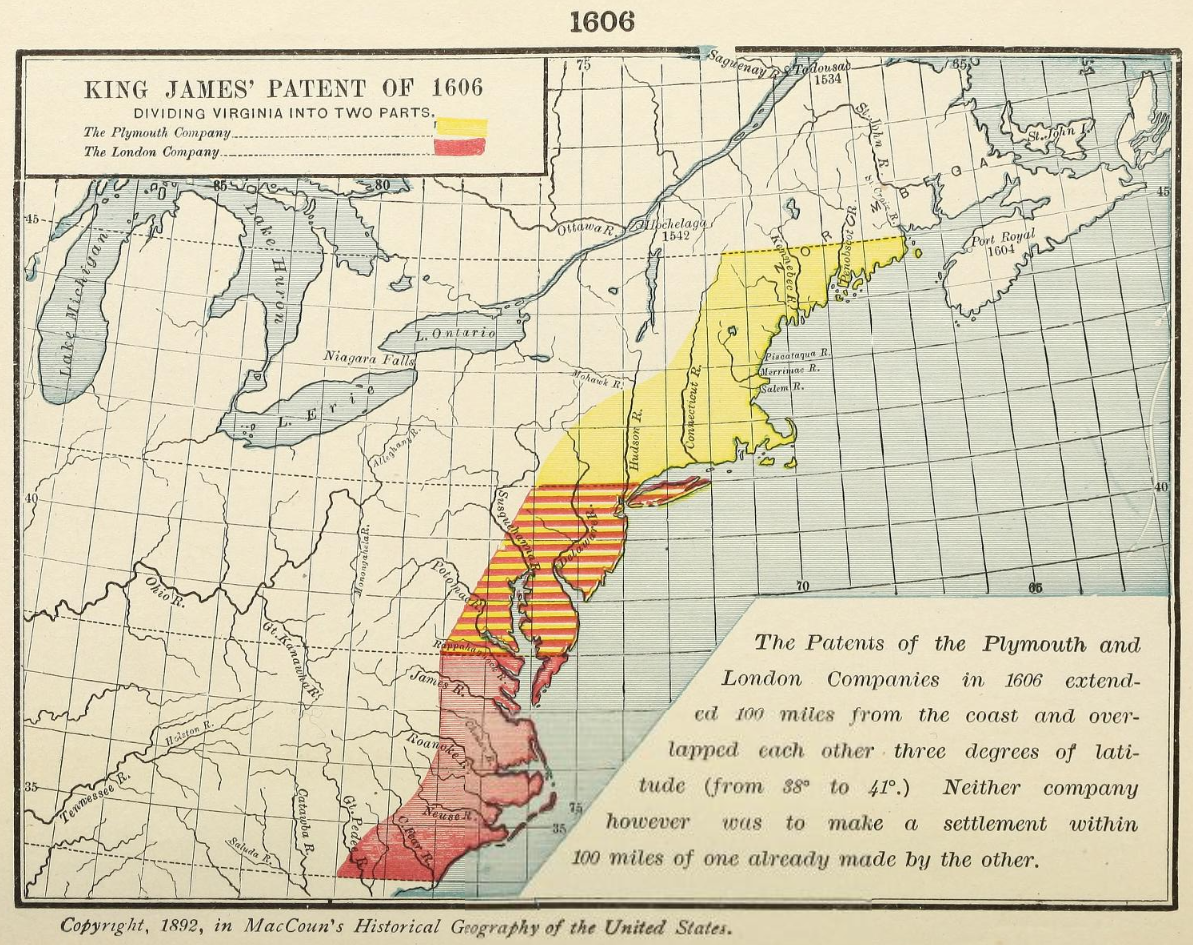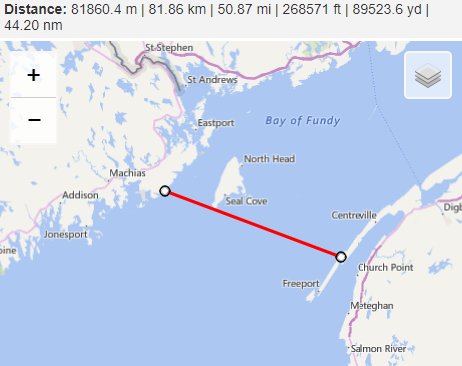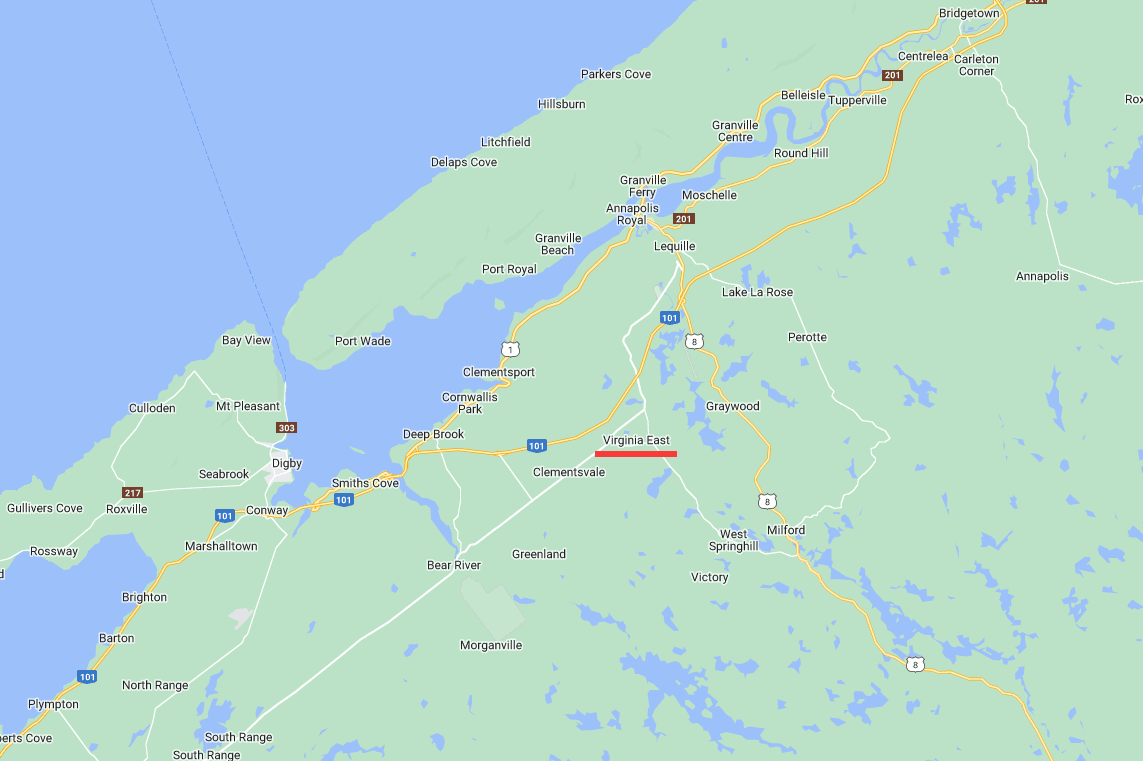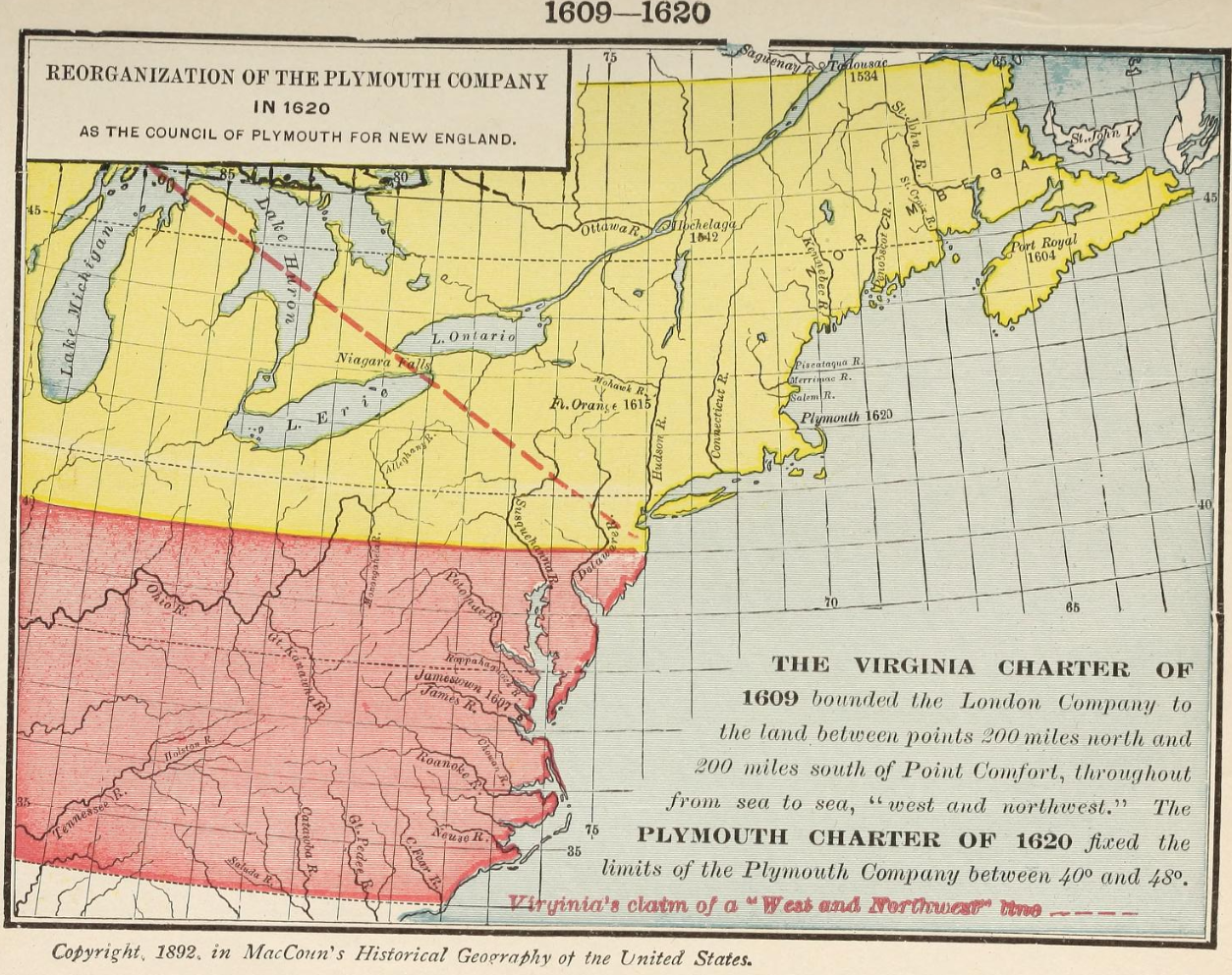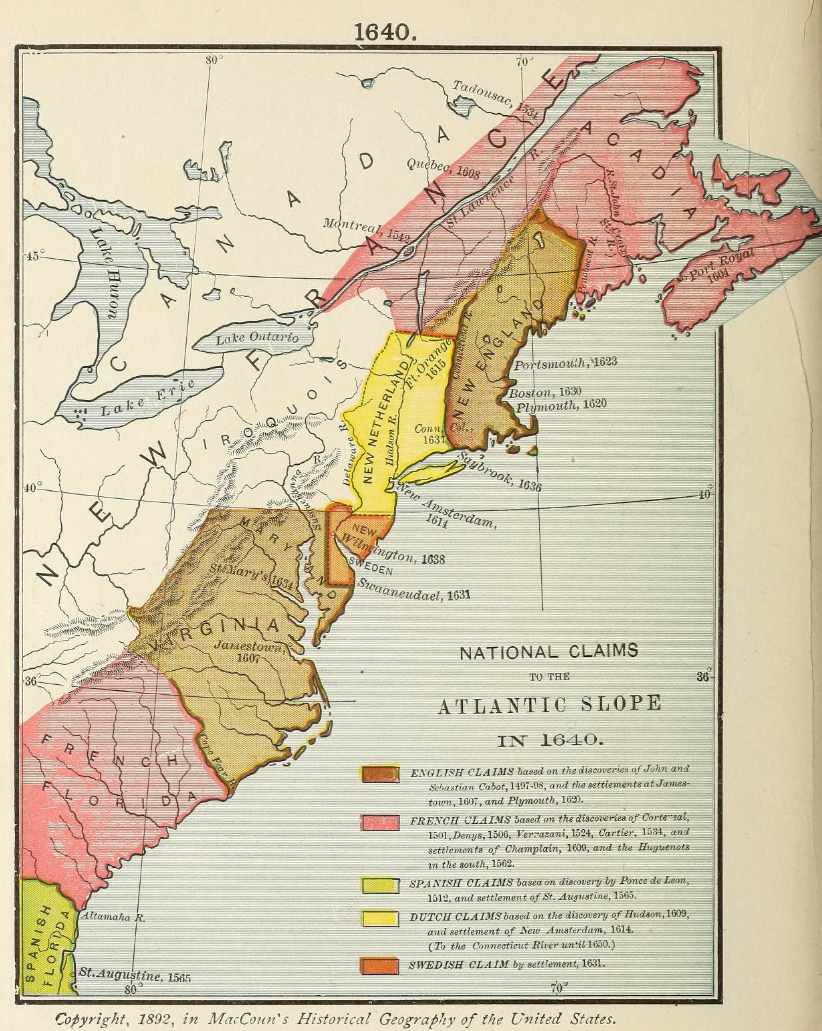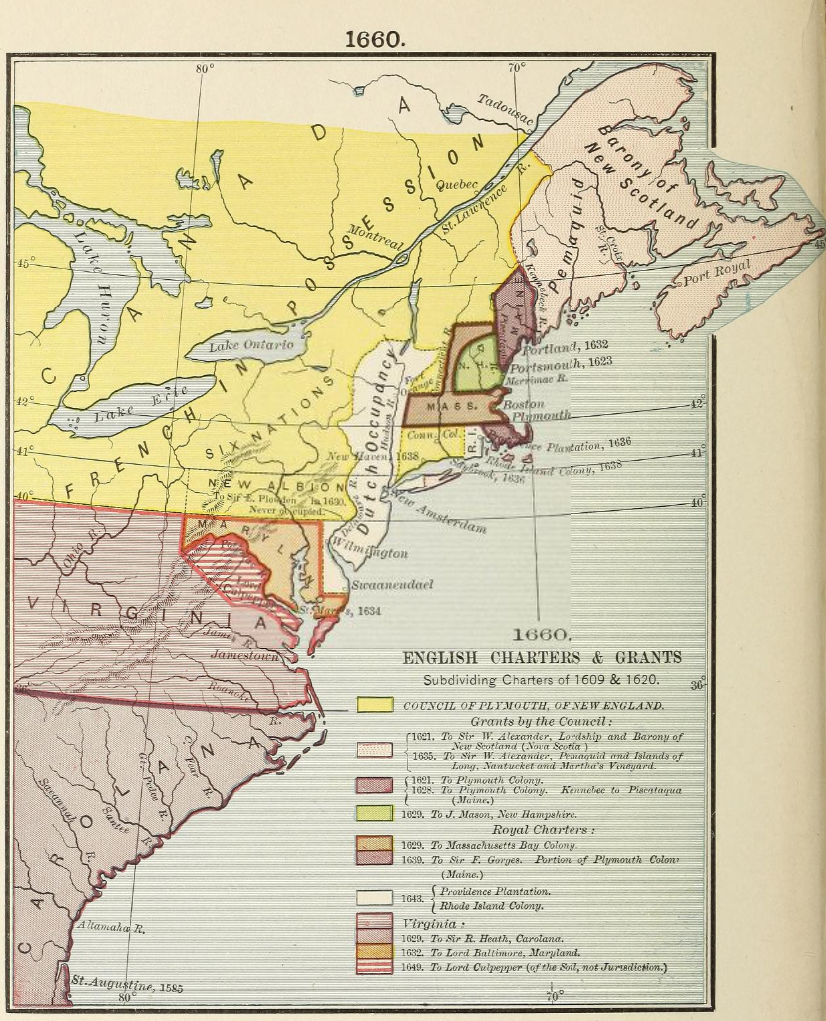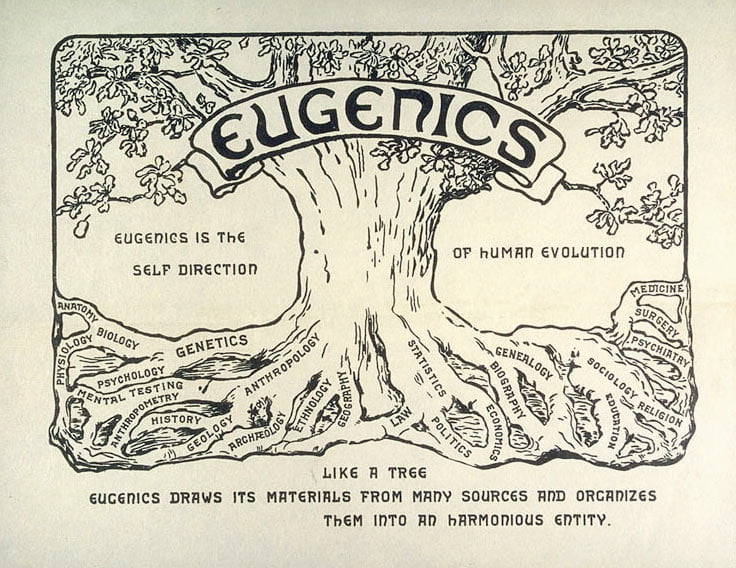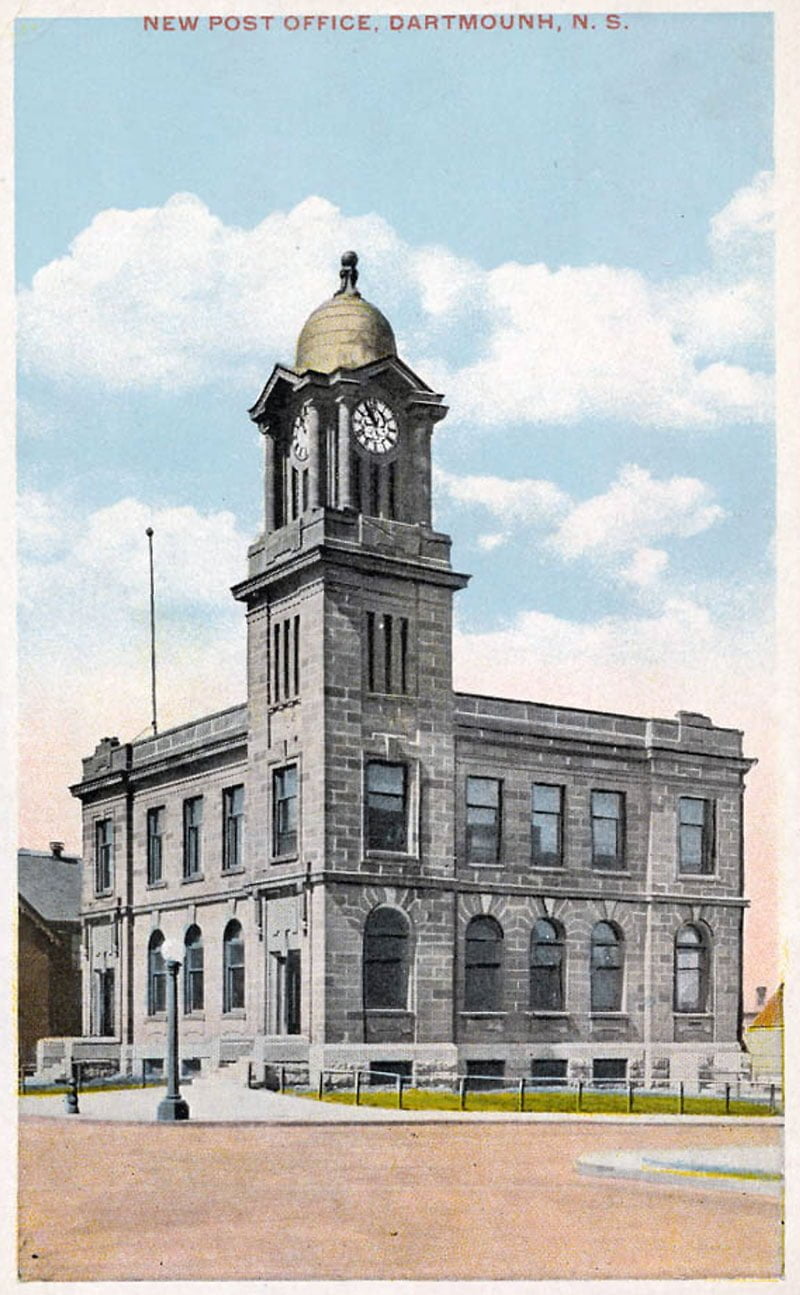“An act for the admission of the states of Nova Scotia, New Brunswick, Canada East, and Canada West, and for the organization of the territories of Selkirk, Saskatchewan, and Columbia” …provided that as soon as the governments of Great Britain and of the provinces indicated their acceptance, the states and territories should be admitted.
The conditions of admission were set forth in twelve articles. In the first two, provision was made for the taking over of public works, and the assumption of the funded debt and liabilities of the provinces.
In the apportionment of the latter, about one half of the total amount suggested is offered to Canada West – a key to the whole curious proposal.
Articles three to six made provision for organization, representation, and territorial divisions of the proposed states and territories. The next article proposed the assumption of the expenditure of $50,000,000 to improve the navigation of the St. Laurence and the great lakes.
Land grants of twenty sections per mile were next suggested, to aid in the construction of a railroad from Truro, Nova Scotia, to some point on the Pacific coast north of 49 degrees, by way of Riviere du Loup, Ottawa, Sault Ste Marie, Bayfield, Superior, Pembina, Fort Garry, and the valley of the North Saskatchewan.
An offer of ten million dollars was proposed to be made to the Hudson’s bay company for all their rights in North America.
The last section of the plan ingeniously provided that if Prince Edward Island declined to enter, the benefits offered it should be omitted, but for the others all the provisions would be retained.
Similar omissions were to be made in case Newfoundland, Nova Scotia, New Brunswickwick, and Canada declined to accept. There remained then the northwest territory and the Pacific provinces, to which were ofdered aid in the construction of a railway from the western extremity of Superior, to the Pacific coast, by way of Pembina, Fort Garry, and the valley of the Saskatchewan and this was the heart of the proposition.
General N. P. Banks introduced this bill, exactly as drafted by Taylor, into the house of representatives on July 2, 1866, and after a second reading it was referred to the committee on foreign affairs, of which Banks himself was chairman. No definite action on this bill resulted, yet it precipitated a large amount of newspaper discussion, particularly in relation to the question of reciprocity, and thus served as a means, of testing opinion on the whole subject of annexation, though the real purpose of the measure in connection with the northwest provinces was little understood.
As a result of its abrogation by the United States, the Elgin-Marcy reciprocity treaty came to an end on March 17, 1866. The precise reasons for its abrogation have been the subject of considerable discussion.
In a budget speech A. T. Galt declared, “If there was one thing more than another, apart from the irritation growing out of the events which happened during the late war, which instigated them in abrogating the reciprocity treit was the belief that they could compel us into a closer political alliance with them.”
Sir John G. Bourinot writes, “The commercial classes in the eastern and western states were, on the whole, favourable to an enlargement of the treaty, but the real cause of its repeal was the prejudice in the northern states against Canada on account of its supposed sympathy for the confederate states during the Secession war. A large body of men in the north believed that the repeal of the treaty would sooner or later force Canada to join the republic. . .
There was a general feeling in the United States that the advantages accruing to Canada under the treaty were far greater than those to the United States. American manufactured goods were rather highly taxed, and it was felt that Canadian legislation was damaging the trade of American carriers.
There seems to be no actual proof that the abrogation was brought about with the hope of securing annexation, but in Canada the belief was general that such was the motive. Mr. Robinson shows that in the debates on confederation at Quebec from February 3 to March 14, 1865, there was but one opinion, namely, that “the abrogation of the treaty was a lever to force Canada from her allegiance to England and into the United States.”
39TH CONGRESS, 1ST SESSION
H.R. 754.
IN THE HOUSE OF REPRESENTATIVES
JULY 2, 1866.
Read twice, refered to the Committee on Foreign Affairs, and ordered to be printed.
Mr Banks, on leave, introduced the following bill:
A Bill for the admission of the States of Nova Scotia, New Brunswick, Canada East, and Canada West, and for the organization of the Territories of Selkirk, Saskatchewan, and Columbia
Be it enacted by the Senate and House of Representatives of the United States of America in Congress assembled, That the President of the United States is hereby authorized and directed, whenever notice shall be deposited in the Department of State that the governments of Great Britain and the provinces of New Brunswick, Nova Scotia, Prince Edward Island, Newfoundland, Canada, British Columbia, and Vancouver’s Island have accepted the proposition hereinafter made by the United States, to publish by proclamation that, from the date thereof, the States of Nova Scotia, New Brunswick, Canada East, and Canada West, and the Territories of Selkirk, Saskatchewan, and Columbia, with limits and rights as by the act defined, are constituted and admitted as States and Territories of the United States of America.
SEC. 2. And be it further enacted, That the following articles are hereby proposed, and from the date of the proclamation of the President of the United States shall take effect, as irrevocable conditions of the admission of the States of Nova Scotia, New Brunswick, Canada East, and Canada West, and the future States of Selkirk, Saskatchewan, and Columbia, to wit:
ARTICLE I
All public lands not sold or granted; canals, public harbors, light-houses, and piers; river and lake improvements; railway stocks, mortgages, and other debts due by railway companies to the provinces; custom-houses and post offices, shall vest in the United States; but all other public works and property shall belong to the State governments respectively, hereby constituted, together with all sums due from purchasers or lessees of lands, mines, or minerals at the time of the union.
ARTICLE II
In consideration of the public lands, works, and property vested as aforesaid in the United States, the United States will assume and discharge the funded debt and contingent liabilities of the late provinces, at rates of interest not exceeding five per centum, to the amount of eighty-five million seven hundred thousand dollars, apportioned as follows: To Canada West, thirty-six million five hundred thousand dollars; to Canada East, twenty-nine million dollars; to Nova Scotia, eight million dollars; to New Brunswick, seven million dollars; to Newfoundland, three million two hundred thousand dollars; and to Prince Edward Island, two million dollars; and in further consideration of the transfer by said provinces to the United States of the power to levy import and export duties, the United States will make an annual grant of one million six hundred and forty-six thousand dollars in aid of local expenditures, to be apportioned as follows: To Canada West, seven hundred thousand dollars; to Canada East, five hundred and fifty thousand dollars; to Nova Scotia, one hundred and sixty-five thousand dollars; to New Brunswick, one hundred and twenty-six thousand dollars; to Newfoundland, sixty-five thousand dollars; to Prince Edward Island, forty thousand dollars.
ARTICLE III
For all purposes of State organization and representation in the Congress of the United States, Newfoundland shall be part of Canada East, and Prince Edward Island shall be part of Nova Scotia, except that each shall always be a separate representative district, and entitled to elect at least one member of the House of Representatives, and except, also, that the municipal authorities of Newfoundland and Prince Edward Island shall receive the indemnities agreed to be paid by the United States in Article II.
ARTICLE IV
Territorial divisions are established as follows: (1) New Brunswick, with its present limits; (2) Nova Scotia, with the addition of Prince Edward Island; (3) Canada East, with the addition of Newfoundland and all territory east of longitude eighty degrees and south of Hudson’s strait; (4) Canada West, with the addition of territory south of Hudson’s bay and between longitude eighty degrees longitude ninety degrees; (5) Selkirk Territory, bounded east by longitude ninety degrees, south by the late boundary of the United States, west by longitude one hundred and five degrees, and north by the Arctic circle; (6) Saskatchewan Territory, bounded east by longitude one hundred and five degrees, south by latitude forty-nine degrees, west by the Rocky mountains, and north by latitude seventy degrees; (7) Columbia Territory, including Vancouver’s Island, and Queen Charlotte’s island, and bounded east and north by the Rocky mountains, south by latitude forty-nine degrees, and west by the Pacific ocean and Russian America. But Congress reserves the right of changing the limits and subdividing the areas of the western territories at discretion.
ARTICLE V
Until the next decennial revision, representation in the House of Representatives shall be as follows: Canada West, twelve members; Canada East, including Newfoundland, eleven members; New Brunswick, two members; Nova Scotia, including Prince Edward Island, four members.
ARTICLE VI
The Congress of the United States shall enact, in favor of the proposed Territories of Selkirk, Saskatchewan, and Columbia, all the provisions of the act organizing the Territory of Montana, so far as they can be made applicable.
ARTICLE VII
The United States, by the construction of new canals, or the enlargement of existing canals, and by the improvement of shoals, will so aid the navigation of the Saint Lawrence river and the great lakes that vessels of fifteen hundred tons burden shall pass from the Gulf of Saint Lawrence to Lakes Superior and Michigan: Provided, That the expenditure under this article shall not exceed fifty millions of dollars.
ARTICLE VIII
The United States will appropriate and pay to “The European and North American Railway Company of Maine” the sum of two millions of dollars upon the construction of a continuous line of railroad from Bangor, in Maine, to Saint John’s, in New Brunswick: Provided, That said “The European and North American Railway Company of Maine” shall release the government of the United States from all claims held by it as assignee of the States of Maine and Massachusetts.
ARTICLE IX
To aid the construction of a railway from Truro, in Nova Scotia, to Riviere du Loup, in Canada East, and a railway from the city of Ottawa, by way of Sault Ste. Marie, Bayfield, and Superior, in Wisconsin, Pembina, and Fort Garry, on the Red River of the North, and the valley of the North Saskatchewan river to some point on the Pacific ocean north of latitude forty-nine degrees, the United States will grant lands along the lines of said roads to the amount of twenty sections, or twelve thousand eight hundred acres, per mile, to be selected and sold in the manner prescribed in the act to aid the construction of the Northern Pacific railroad, approved July two, eighteen hundred and sixty-two, and acts amendatory thereof; and in addition to said grants of lands, the United States will further guarantee dividends of five per centum upon the stock of the company or companies which may be authorized by Congress to undertake the construction of said railways: Provided, That such guarantee of stock shall not exceed the sum of thirty thousand dollars per mile, and Congress shall regulate the securities for advances on account thereof.
ARTICLE X
The public lands in the late provinces, as far as practicable, shall be surveyed according to the rectangular system of the General Land office of the United States; and in the Territories west of longitude ninety degrees, or the western boundary of Canada West, sections sixteen and thirty-six shall be granted for the encouragement of schools, and after the organization of the Territories into States, five per centum of the net proceeds of sales of public lands shall be paid into their treasuries as a fund for the improvement of roads and rivers.
ARTICLE XI
The United States will pay ten millions of dollars to the Hudson Bay Company in full discharge of all claims to territory or jurisdiction in North America, whether founded on the charter of the company or any treaty, law, or usage.
ARTICLE XII
It shall be devolved upon the legislatures of New Brunswick, Nova Scotia, Canada East, and Canada West, to conform the tenure of office and the local institutions of said States to the Constitution and laws of the United States, subject to revision by Congress.
SEC 3. And be it further enacted, That if Prince Edward Island and Newfoundland, or either of those provinces, shall decline union with the United States, and the remaining provinces, with the consent of Great Britain, shall accept the proposition of the United States, the foregoing stipulations in favor of Prince Edward Island and Newfoundland, or either of them, will be omitted; but in all other respects the United States will give full effect to the plan of union. If Prince Edward Island, Newfoundland, Nova Scotia, and New Brunswick shall decline the proposition, but Canada, British Columbia, and Vancouver island shall, with the consent of Great Britain, accept the same, the construction of a railway from Truro to Riviere du Loup, with all stipulations relating to the maritime provinces, will form no part of the proposed plan of union, but the same will be consummated in all other respects. If Canada shall decline the proposition, then the stipulations in regard to the Saint Lawrence canals and a railway from Ottawa to Sault Ste. Marie, with the Canadian clause of debt and revenue indemnity, will be relinquished. If the plan of union shall only be accepted in regard to the northwestern territory and the Pacific provinces, the United States will aid the construction, on the terms named, of a railway from the western extremity of Lake Superior, in the State of Minnesota, by way of Pembina, Fort Garry, and the valley of the Saskatchewan, to the Pacific coast, north of latitude forty-nine degrees, besides securing all the rights and privileges of an American territory to the proposed Territories of Selkirk, Saskatchewan, and Columbia.
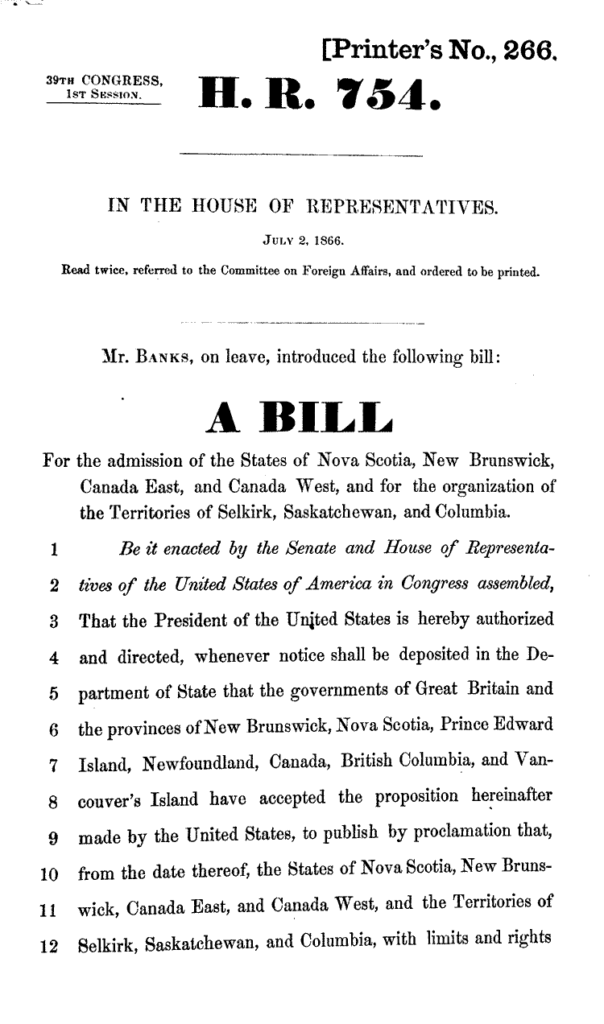
Blegen, T. C. (1918). A Plan for the Union of British North America and the United States, 1866. The Mississippi Valley Historical Review, 4(4), 470–483. https://doi.org/10.2307/1896039, https://en.wikisource.org/wiki/Annexation_Bill_of_1866

